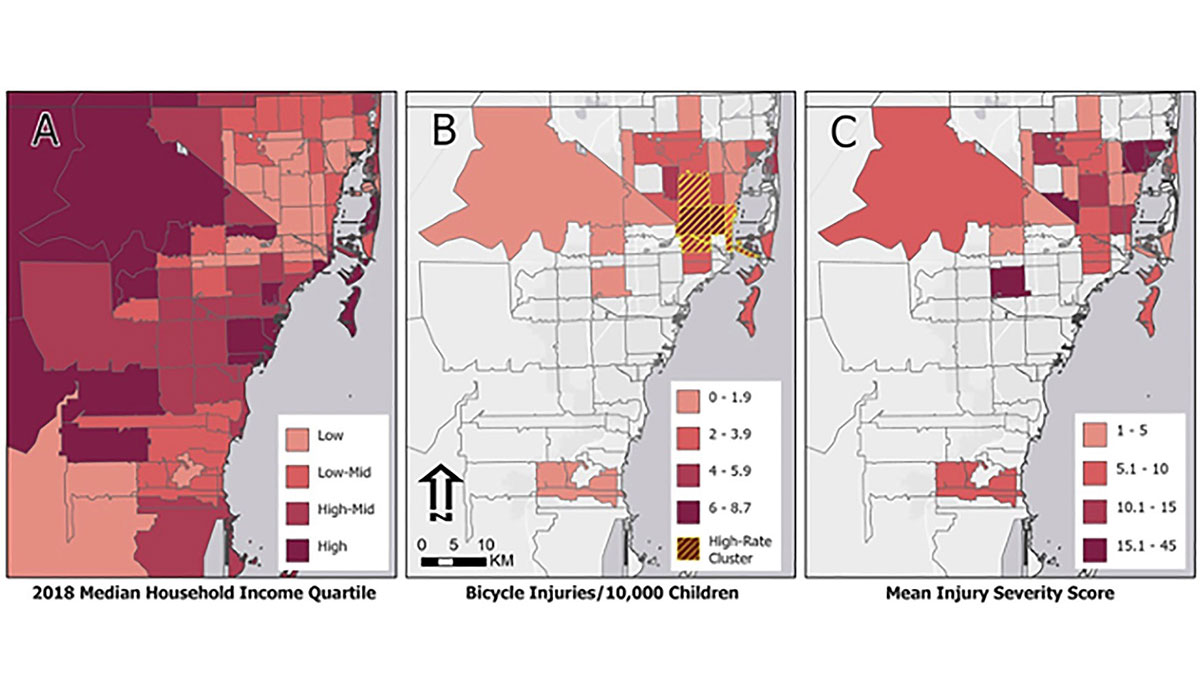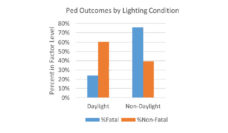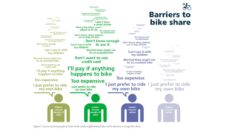How old were you when you learned to ride a bike? Did you have a driveway or a wide sidewalk where you could practice safely?
Learning to ride a bicycle is an important developmental milestone. Cycling is also one of the most common causes of emergency department visits among children under 18. Over 250,000 bicycle injuries occur among children every year in the United States. About 300 of them are fatal. Although wearing a helmet significantly prevents brain injury and death, average helmet use in the U.S. is only 20% and drops to 5-10% among teenagers.
Researchers in Miami looked for areas in the city where pediatric bicycle accidents were concentrated. They analyzed bicycle injury data at a trauma center from 2013 to 2020 along with zip codes of the injury site and the patient’s home.
Injuries were most common in areas with low household income that were adjacent to interstates. Map A shows household income averages, where there is a cluster of light pink low-income households in the top right corner. In map B, the high-rate cluster of bike injuries, shown with the striped lines, overlaps with that same area. Map C shows higher injury severity scores in darker colors are clustered in that same section of the map.
Enforcing helmet laws can increase helmet use and decrease head trauma injury. But these laws can increase disparities primarily by increasing helmet use among White youth.
Helmets are not the only protection child cyclists need. The study reported high levels of foot, spine, neck, abdominal and facial injuries. Half of accidents occurred within one mile from home. Low-income neighborhoods across the United States are less likely to have streetlights and sidewalks and are more likely to have high vehicular traffic. Local communities could decrease injuries by protecting pedestrians from vehicular traffic, limiting vehicle speeds, and improving pedestrian visibility.
Better biking infrastructure could lead to the largest projected increase in bicyclists among ethnic minority and low-income populations. The researchers call for safer biking infrastructure in areas with higher rates of bicycle injury among kids, in addition to community-based helmet use interventions.
Databyte via Gareth P. Gilna, Justin Stoler, Rebecca A. Saberi, Adriana C. Baez, Walter A. Ramsey, Carlos T. Huerta, Christopher F. O’Neil, Rishi Rattan, Eduardo A. Perez, Juan E. Sola, Chad M. Thorson, Analyzing pediatric bicycle injuries using geo-demographic data, Journal of Pediatric Surgery, 2022.














